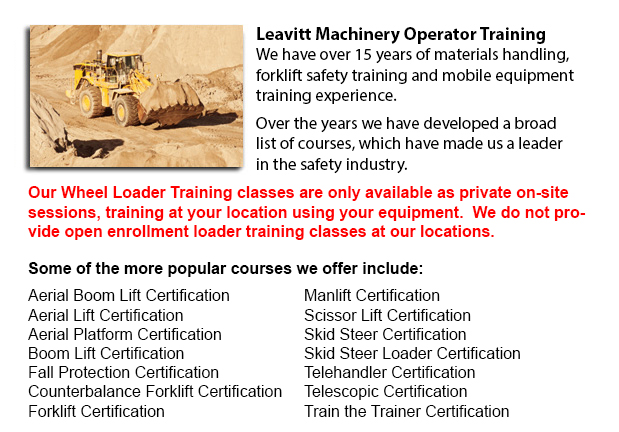
Lift trucks are obtainable in various load capacities and a variety of units. The majority of forklifts in a regular warehouse surroundings have load capacities between 1-5 tons. Larger scale models are used for heavier loads, like loading shipping containers, could have up to 50 tons lift capacity.
The operator could make use of a control in order to raise and lower the forks, that are also referred to as "tines or forks." The operator can even tilt the mast so as to compensate for a heavy load's tendency to tilt the blades downward to the ground. Tilt provides an ability to function on rough surface also. There are annual competitions meant for experienced lift truck operators to compete in timed challenges as well as obstacle courses at local forklift rodeo events.
General operations
All lift trucks are rated for safety. There is a particular load limit and a specified forward center of gravity. This vital information is supplied by the maker and situated on the nameplate. It is important loads do not exceed these details. It is prohibited in many jurisdictions to interfere with or take out the nameplate without obtaining consent from the forklift maker.
Most forklifts have rear-wheel steering to be able to enhance maneuverability within tight cornering situations and confined areas. This particular kind of steering varies from a drivers' initial experience with different motor vehicles. Since there is no caster action while steering, it is no required to utilize steering force to be able to maintain a continuous rate of turn.
Instability is another unique characteristic of forklift use. A continuously varying centre of gravity happens with each movement of the load amid the forklift and the load and they need to be considered a unit during utilization. A lift truck with a raised load has gravitational and centrifugal forces which may converge to result in a disastrous tipping mishap. To be able to prevent this from happening, a forklift should never negotiate a turn at speed with its load elevated.
Lift trucks are carefully built with a particular load limit for the blades with the limit lessening with undercutting of the load. This means that the cargo does not butt against the fork "L" and will lower with the rise of the blade. Usually, a loading plate to consult for loading reference is positioned on the lift truck. It is unsafe to utilize a forklift as a worker hoist without first fitting it with certain safety tools such as a "cage" or "cherry picker."
Lift truck use in warehouse and distribution centers
Lift trucks are an essential component of distribution centers and warehouses. It is essential that the work surroundings they are located in is designed in order to accommodate their efficient and safe movement. With Drive-In/Drive-Thru Racking, a forklift has to go inside a storage bay that is multiple pallet positions deep to set down or get a pallet. Operators are often guided into the bay through rails on the floor and the pallet is positioned on cantilevered arms or rails. These tight manoeuvres need trained operators to be able to do the task safely and efficiently. Because every pallet needs the truck to go in the storage structure, damage done here is more frequent than with different types of storage. Whenever designing a drive-in system, considering the measurements of the tine truck, together with overall width and mast width, have to be well thought out to be sure all aspects of a safe and effective storage facility.
-
Forklift Ticket Saskatchewan
Forklift Ticket Saskatchewan - Pallet jacks and forklifts are both meant for basically the same purpose; to move supplies from one location of your warehouse to another. This is pretty much where the comparison stops however. With the pallet jack, th... More -
Loader Ticket Saskatchewan
Loader Ticket Saskatchewan - Gehl articulated loaders have been made to suit practically any condition. They provide great traction and optimal maneuverability due to a heavy-duty oscillating joint that offers forty five degree rotating angles left a... More -
Forklift Training Programs Saskatchewan
Forklift Training Programs Saskatchewan - Are you searching for work as a forklift driver? Our regulatory-compliant mobile equipment operator training provides instruction in kinds of forklifts, pre-shift check, fuel kinds and handling of fuels, and... More -
Heavy Equipment Operator Classes Saskatchewan
Heavy Equipment Operator Classes Saskatchewan - A heavy equipment operator is an individual who has received the right training in order to operate a particular kind or piece of machinery. There are lots of ways for the operator to undergo training a... More -
Telehandler Training in Saskatchewan
Telescopic handlers usually known as telehandlers for short, are an extremely popular piece of heavy construction equipment. They are usually utilized in the construction and agricultural trades. These equipments have farthest reaching capacity and a... More -
Narrow Aisle Forklift / Order Picker Training / Electric Pallet Jack / Electric Pallet Truck Training in Saskatchewan
A pallet lift is a piece of equipment dedicated in the transporting of pallets of various dimensions and weights. They can be utilized as an attachment for forklifts, cranes and other types of heavy machinery or be applied on their own. Pallet lifts... More -
Operator Safety Training, Re-Qualification Training, In-House Instructor Training in Saskatchewan
Used in just about all industrial construction sites, warehouse operations or boat yards, the lift truck is a very important component so as to help pick up and transfer supplies. The reach feature of a forklift can help improve the applications whic... More -
Aerial Lift Ticket Saskatchewan
Aerial Lift Ticket Saskatchewan - Boom vehicle are often used by phone, cable and utilities firms as they have extended folded arms which are generally folded over the roofs of business vehicles. On the end of the extension of extendable arms usually... More

Forklift Training Saskatchewan
TOLL FREE: 1-888-254-6157
Saskatoon, Saskatchewan
forklifttrainingsaskatchewan.com
Email Us
About Us



